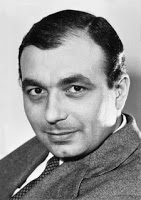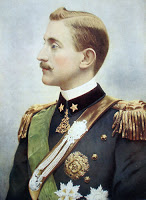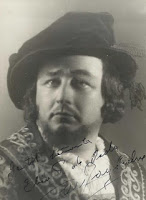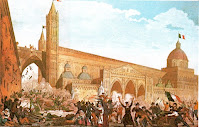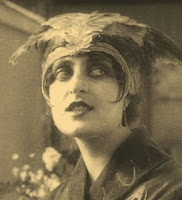NEW - Luca Longhi - artist
‘Quiet’ painter trained his children to follow in his footsteps
Luca Longhi, a portrait painter also known for his beautiful religious paintings who was working during the late Renaissance and Mannerist periods, was born on this day in 1507 in Ravenna in Emilia-Romagna. He was the father of the painters Francesco Longhi and Barbara Longhi, who were both trained by him and worked in his workshop. Little is known about Luca Longhi’s own artistic training, but it is thought he probably attended the Ravenna workshops of local artists Francesco Zaganelli and his brother, Bernardino Zaganelli. The painter and art historian Giorgio Vasari visited Ravenna in 1548 and wrote about "Master Luca de Longhi" in his book, The Lives of the Artists. He says: “Luca de Longhi is a man of good nature, quiet and (a) scholar (who) has done in his homeland Ravenna, and outside, many beautiful oil pictures and portraits. He has done and still works with patience and study.” Longhi painted the portraits of many famous and important people of his time, including Giovanni Guidiccione, Bishop of Fossombrone, Giulio della Rovere, Cardinal of Urbino, Alessandro Sforza, Cardinal legate of Romagna and Cristoforo Boncompagni, Archbishop of Ravenna. Read more…
__________________________________________________________
Giulio Andreotti - political survivor
Christian Democrat spent 45 years in government
Giulio Andreotti, who was Italy's most powerful politician for a period lasting almost half a century, was born on this day in 1919 in Rome. He was a member of almost every Italian government from 1947 until 1992, leading seven of them. He would have certainly gone on to be president were it not for the scandals in which he became embroiled in the 1990s, when his Christian Democrat party collapsed as a result of the mani pulite - clean hands - bribery investigations. Andreotti himself was accused of an historic association with the Mafia and of commissioning the murder of a journalist, although he was acquitted of the latter charge on appeal. The youngest of three children, Andreotti was brought up in difficult circumstances by his mother after his father, who had taught at a junior school in Segni, about 60km (37 miles) south-east of the capital in Lazio, had died when he was only two years old. In contrast with the unassuming, mild-mannered persona for which he became known as an adult, the young Andreotti had a fiery temper. On one occasion, in church, he attacked another altar boy, stubbing out a lit taper in his eye after feeling he had been ridiculed. Read more…
_________________________________________________________
Nina Ricci – designer
Creative flair of Italian-born founder of famous fashion house
The prestigious fashion designer Nina Ricci was born Maria Nielli in Turin in 1883. She moved with her family to live in Florence at the age of five and then went to live with them in France when she was 12. At the age of 13, having acquired the nickname Nina, she began working as a dressmaker’s apprentice. She continued working in fashion, eventually joining the house of Raffin as a designer. In 1904 she married an Italian jeweller named Luigi Ricci and they later had a son, Robert. The house of Nina Ricci was founded in Paris in 1932. Nina became famous for her romantic, feminine, creations and her son, Robert, later helped her manage the business side. In 1948 the house of Nina Ricci launched the fragrance ‘L’air du temps’, in a glass bottle decorated with doves, which was co-designed by Marc Lalique. This became a world-wide success. In the 1950s Nina Ricci stepped back from designing and her son continued to run the company with new designers. Maria (Nina) Ricci died in 1970 at the age of 87. Read more…
_________________________________________________________
Alberico Gentili – international lawyer
Academic gave the world its first system of jurisprudence
Alberico Gentili, who is regarded as one of the founders of the science of international law, was born on this day in 1552 in San Ginesio in the province of Macerata in Marche. He was the first European academic to separate secular law from Roman Catholic theology and canon law and the earliest to write about public international law. He became Regius Professor of Civil Law at the University of Oxford in England and taught there for 21 years. Gentili graduated as a doctor of civil law in 1572 from the University of Perugia but was exiled from Italy in 1579 and eventually went to live in England because he became a Protestant. He taught at Oxford from 1581 until his death in 1608 and became well-known for his lectures on Roman law and his writing on legal topics. In 1588 Gentili published De jure belli commentatio prima - First Commentary on the Law of War. This was revised in 1598 to become Three Books on the Law of War, which contained a comprehensive discussion on the laws of war and treaties. Gentili believed international law should comprise the actual practices of civilised nations, tempered by moral, but not specifically religious, considerations. Read more…
_________________________________________________________
Franchino Gaffurio – composer
Musician whose name has lived on for centuries in Milan
Renaissance composer Franchino Gaffurio was born on this day in 1451 in Lodi, a city in Lombardy some 40km (25 miles) southeast of Milan. He was to become a friend of Leonardo da Vinci later in life and may have been the person depicted in Leonardo’s famous painting, Portrait of a Musician. The oil on wood painting, which Da Vinci is thought to have completed in around 1490, is housed in the Biblioteca Ambrosiana in Milan. Gaffurio was born into an aristocratic family, who sent him to a Benedictine monastery, where he acquired musical training. He later became a priest and lived in Mantua and Verona before setting in Milan, where he became maestro di cappella (choirmaster) at the Duomo in 1484. He was to retain the post for the rest of his life. Gaffurio was one of Italy’s most famous musicians in the late 15th and early 16th centuries and as such met composers from all over Europe while working in Milan and wrote books of instruction for young composers. One of his most famous comments was that the tactus, the tempo of a semibreve, is equal to the pulse of a man who is breathing quietly, at about 72 beats per minute. Read more…











